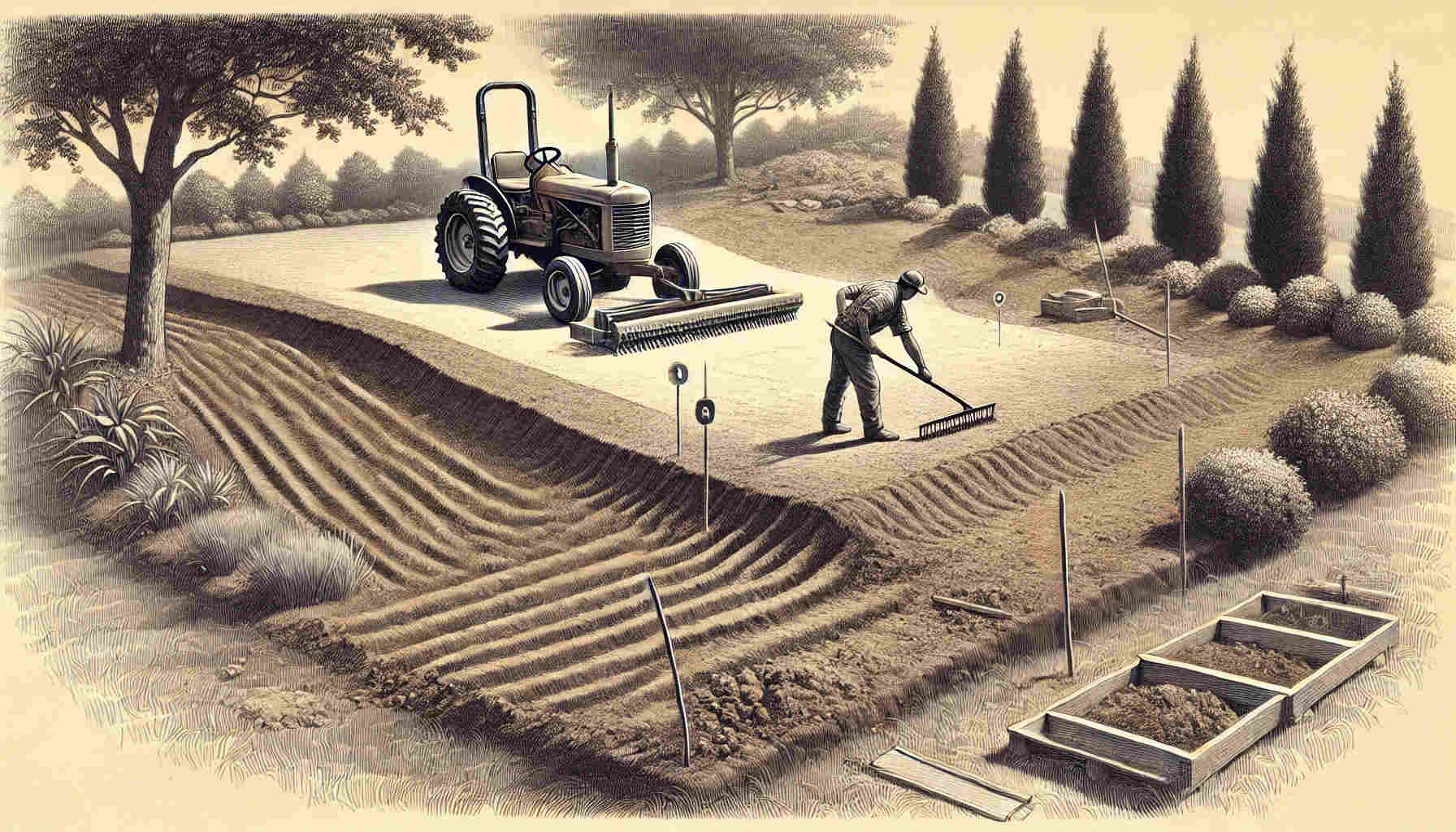Grading your backyard (How to Grade a Yard) is vital to save you water from pooling around your private home’s basis. Proper backyard grading guarantees efficient water drainage, shielding your house from damage and developing a clean, even panorama. Here’s the way to grade your yard effectively and make sure water flows far from your house.
1. Assess Your Yard
Before starting, identify the problem areas in your yard. Walk around and look for spots where water collects or flows toward the house. Use stakes and string to map out your grading plan. The goal is to create a gentle slope that directs water far from your own home’s foundation. Typically, a slope of 2-three% (or about 2-3 inches of drop in step with 10 ft) is good for correct drainage.
You can use a stage and a measuring tape to set up this slope. Set stakes at regular periods around your yard and tie string among them, adjusting the height of the string to match the preferred slope. This visible manual will help you apprehend wherein the soil desires to be introduced or removed.
2. Gather Your Tools and Materials
Grading a yard requires some essential tools and materials. Depending on the scale of your assignment, you may need:
- A shovel or spade
- A steel rake
- A wheelbarrow
- A tamper or compactor
- Soil or topsoil for filling in low areas
- A small tractor or skid steer (for larger yards)
For larger grading jobs, consider renting heavy equipment to save time and effort. Smaller yards can be graded manually with a shovel and rake.
3. Remove Debris and Existing Vegetation
Clear the area of rocks, debris, and existing vegetation. Removing obstacles ensures a smoother grading process. If the backyard has sizeable increase, don’t forget using a sod cutter to cast off the grass in massive sections. Be positive to store the topsoil for later use, as it can assist nourish your lawn whilst you reseed.
4. Start Grading Your Yard
Begin by spreading soil in the areas that need to be raised. Use the stakes and string as a guide to create the proper slope. Shovel soil into low spots and rake it out evenly. For high spots, use the shovel to remove excess soil and redistribute it where needed. Focus on creating a gentle, consistent grade.
If you’re working with a larger area, a small tractor with a grading attachment can make this job easier. Drive back and forth over the yard to level the soil, ensuring the slope remains consistent.
5. Compact the Soil
Once the backyard is graded, compact the soil to prevent destiny settling. A hand tamper works properly for small regions, even as a plate compactor is higher for larger yards. Compacting the soil guarantees it remains strong and keeps the proper slope through the years.
If you notice any choppy regions after compacting, upload or cast off soil as wished, then compact again. The very last result ought to be a smooth, even backyard that slopes far from your home.
6. Reseed and Restore Your Lawn
After grading, it’s time to restore your lawn. Top a graded area with topsoil to provide a soddy base for grass seed. Use a spreader to put grass seed uniformly on the soil, and then rake it in lightly. Water the region thoroughly and preserve the soil moist till the grass starts to develop.
Adding mulch or straw can assist hold moisture and defend the seeds while they germinate. With ordinary watering and a few endurance, your newly graded yard will soon transform into a lush, healthy lawn.
7. Maintain the Grade
Over time, soil may also settle or erode, affecting your backyard’s slope. Regularly look into your yard and upload soil as had to maintain proper drainage. Keeping gutters smooth and installing downspout extensions can also assist direct water far from your basis and guard your grading efforts.
Grading a backyard (How to Grade a Yard) may seem hard, but with careful planning and the right equipment, you can create a panorama that not best appears beautiful but also protects your home from water damage.

